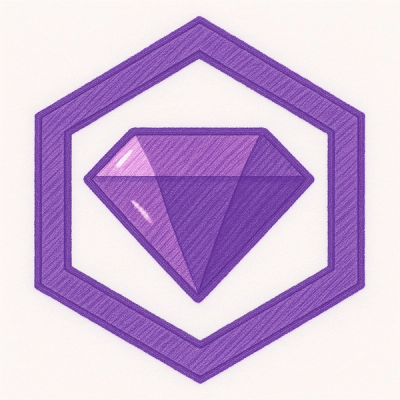
Security News
Follow-up and Clarification on Recent Malicious Ruby Gems Campaign
A clarification on our recent research investigating 60 malicious Ruby gems.
Calculate between GridSquare references and latitude/longitude.
grid = GridSquare.new "DN40bi"
grid.center
# => #<Location:0x000001008514d8 @longitude=-109.20833333333333, @latitude=41.6875>
grid.width
# => 0.08333333333333333
grid.height
# => 0.041666666666666664
GridSquare.encode(-111.866785, 40.363840).subsquare
# => "DN40bi"
# With arbitrary precision: specify the number of fields
GridSquare.encode(-111.866785, 40.363840, 10).grid_reference
# => "DN40BI57XH67OE24bd98"
Okay in theory the GridSquare system is really complicated. But in practice is just base conversion to a number that has a changing radix. The first pair of digits are base 18, and the following pairs alternate between base 10 and base 24.
Here's how it works:
The first two letters of a grid reference express the longitude and latitude in base 18 (A through R). This pair of letters divides up the whole planet into 18 equal "fields", each field being 10 degrees high (latitude) and 20 degrees wide (longitude).
The next two digits are decimals that divide up each field into 10x10 "squares" (that's their name; they're obviously not square or even rectangular). Squares are 2 degrees wide and 1 degree tall.
The next two letters are base 24 (A through X) and divide each square into 24x24 "subsquares". Each subsquare is 5 minutes wide and 2.5 minutes tall.
The next two digits are decimals. The official spec calls this the "extended subsquare".
Officially the locator system stops at extended subsquares (8 digits) but unofficially it can be extended by repeating the base 10, base 24 pairs indefinitely to give precision to the subatomic level and beyond. This is of course quite silly as the whole system is based on the notion of a spherical earth and the point of the system is to economically tell a complete stranger approximately where in the world the person they are talking to is located.
By convention, the code is capitalized except for the last 2 letters, though the first two characters are always capitalized.
Ham Radio operators use them to quickly exchange approximate location. By convention, shortwave operators give their location in squares while VHF and UHF operators give their location in subsquares. A square has a precision of about 280km; subsquares give a location to within 12km.
Yes. It even has an amusing name, the Maidenhead Locator System: http://en.wikipedia.org/wiki/Maidenhead_Locator_System
FAQs
Unknown package
We found that grid_square demonstrated a not healthy version release cadence and project activity because the last version was released a year ago. It has 2 open source maintainers collaborating on the project.
Did you know?

Socket for GitHub automatically highlights issues in each pull request and monitors the health of all your open source dependencies. Discover the contents of your packages and block harmful activity before you install or update your dependencies.

Security News
A clarification on our recent research investigating 60 malicious Ruby gems.

Security News
ESLint now supports parallel linting with a new --concurrency flag, delivering major speed gains and closing a 10-year-old feature request.

Research
/Security News
A malicious Go module posing as an SSH brute forcer exfiltrates stolen credentials to a Telegram bot controlled by a Russian-speaking threat actor.